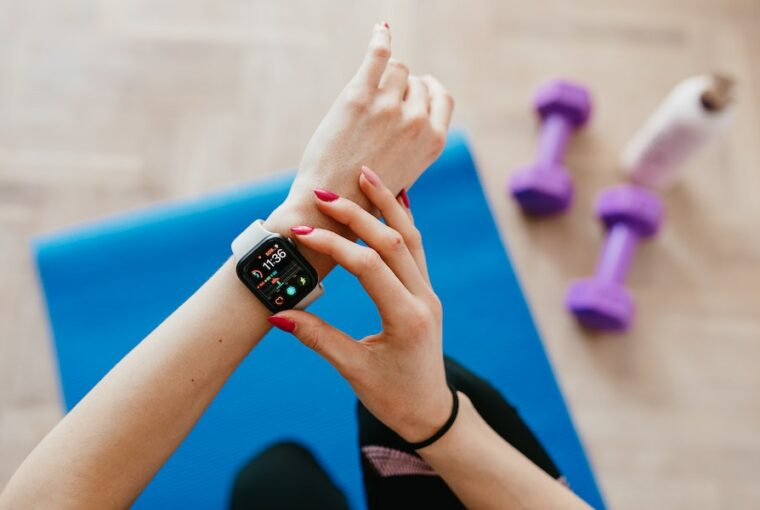In the realm of fitness, change is one of the few constants. Our understanding of exercise, performance, and health is continually reshaped by emerging research and innovations. One of the most notable catalysts for this evolution in recent years has been the proliferation of fitness gadgets.
Devices like those from Ape Born Fitness have swiftly transitioned from being mere curiosities to indispensable companions for those seeking peak physical condition. In this article, we’ll explore how these tools are not just augmenting but revolutionizing the age-old profession of personal training.
The Historical Perspective: Personal Training Before Tech
Personal training, in its earliest incarnations, was straightforward—a direct interaction between a coach and a trainee. The coach observed, instructed, and corrected based on years of accumulated experience and often anecdotal knowledge. There was an undeniable art to this process, rooted in intuition and observation. The athlete’s diary or logbook, filled with handwritten notes about distances, weights, repetitions, and occasionally, how they felt, was the primary data source.
But as enlightening as these journals were, they came with limitations. They were subjective, often inconsistent, and lacked the nuance that today’s athletes and coaches crave. There was no precise way to gauge an athlete’s heart rate during a hill sprint, their oxygen levels during an endurance run, or their sleep quality after a taxing training session. The intricacies of an athlete’s biomechanics were inferred, not measured.
While this might paint a picture of a primitive era, it’s worth noting that many coaches and athletes thrived in this system. Yet, as with any discipline, there’s always room for growth, optimization, and, yes, revolution.
Smart Wearables: More Than Just Step Counters
In the last decade, the term “wearable” has become synonymous with fitness. But these aren’t the pedometers of yesteryears, rudimentarily ticking off steps. Today’s wearables are sophisticated miniaturized laboratories, capturing a spectrum of data every second.
Garmin, Fitbit, Whoop, and their ilk have managed to cram an astonishing array of sensors into sleek designs. These devices can record heart rate variability, offering insights into an athlete’s recovery and stress levels. They can gauge altitude and atmospheric pressure and even measure the oxygen saturation in one’s bloodstream—a once complicated procedure now accessible with a glance at one’s wrist.
Yet, it isn’t merely about data collection. It’s about actionable insights. A runner can know if they’re hitting the correct pace and intensity, not just by feeling but by actual physiological feedback. An endurance athlete can ascertain if they’re acclimatizing appropriately at high altitudes. The feedback loop between effort and data has shortened dramatically, creating a more informed athlete.
Virtual Personal Trainers: Ai’s Role In Guided Workouts
Enter the age of the virtual coach—a digital entity tailored to guide you through every squat, sprint, and stretch. While there’s an undeniable value in the human touch, the democratization of personal training through AI is a game-changer. Apps like Freeletics now use complex algorithms, crunching users’ data to provide workouts that adapt in real time. Did you feel a twinge in your knee during those lunges? The AI coach adjusts. Struggling with high-intensity intervals? The program recalibrates.
What makes this intriguing isn’t just the adaptability but the accessibility. Not everyone can afford a personal trainer or has the luxury of working one-on-one with an expert. But with a smartphone, a downloadable app, and some determination, a personalized fitness regimen is now in the pockets of millions.
Yet, a word of caution. While AI trainers are advanced, they don’t replace the nuanced understanding and empathy of a human coach. They’re tools—impressive ones, at that—but tools nonetheless. They work best when combined with human judgment, not in isolation.
Data-Driven Decisions: How Analytics Improve Training Outcomes
We now swim in an ocean of data. From tracking our daily steps to monitoring sleep cycles, modern fitness gadgets gather a staggering amount of information. But raw data, in isolation, is much like an unassembled jigsaw puzzle—rich in potential but lacking clear meaning.
The magic unfolds when analytics come into play. With advances in software, wearables don’t just collect data; they interpret it. Platforms like TrainingPeaks or Strava provide athletes with a granular breakdown of their workouts, shedding light on aspects like power zones, aerobic efficiency, and training load. It’s not just about how much you train but how efficiently you do so.
For instance, understanding one’s lactate threshold—once a domain reserved for elite athletes undergoing lab tests—is now accessible to weekend warriors, thanks to these analytical tools. This data-driven approach leads to smarter training, reduces the risk of injury, and fine-tunes performance. However, while the numbers provide a roadmap, it’s the blend of this digital guidance with human intuition and experience that often paves the way to success.
Interactive Workout Platforms: Bringing The Gym Home
Gone are the days when a home workout meant popping in a VHS tape of aerobic routines. Today, with the surge in interactive fitness platforms, your living room can morph into a state-of-the-art gym.
Peloton’s rise is emblematic of this shift. Their platform, which combines live-streamed classes with real-time feedback, offers a communal workout experience without the confines of a physical gym. It’s not just cycling; platforms like Mirror or Tonal promise strength training sessions where virtual coaches correct your form, adjust your routine and motivate you in real time.
The allure is evident: Convenience, customization, and a touch of community. The physical boundaries that once defined the fitness space have been shattered by technology. However, as immersive as these digital gyms are, they won’t wholly replace the camaraderie, spontaneous interactions, and tactile experiences of a brick-and-mortar gym. They offer a complementary experience, expanding the horizon of what’s possible in the realm of fitness.
Conclusion
In the vast landscape of athletic pursuit, we find ourselves at a compelling crossroads. The digital age, with its relentless influx of gadgets and algorithms, seems poised to redefine our approach to fitness. Yet, as we navigate this new terrain, we must ask ourselves: What truly lies at the heart of personal training?
Fitness gadgets, as innovative as they are, serve as a lens—sharpening our view and offering unprecedented insights into the minutiae of our physiology and performance. But they are, at their essence, tools. Tools that provide clarity, yes, but can’t replicate the deeply human facets of coaching: empathy, intuition, and the shared experience of physical exertion.




